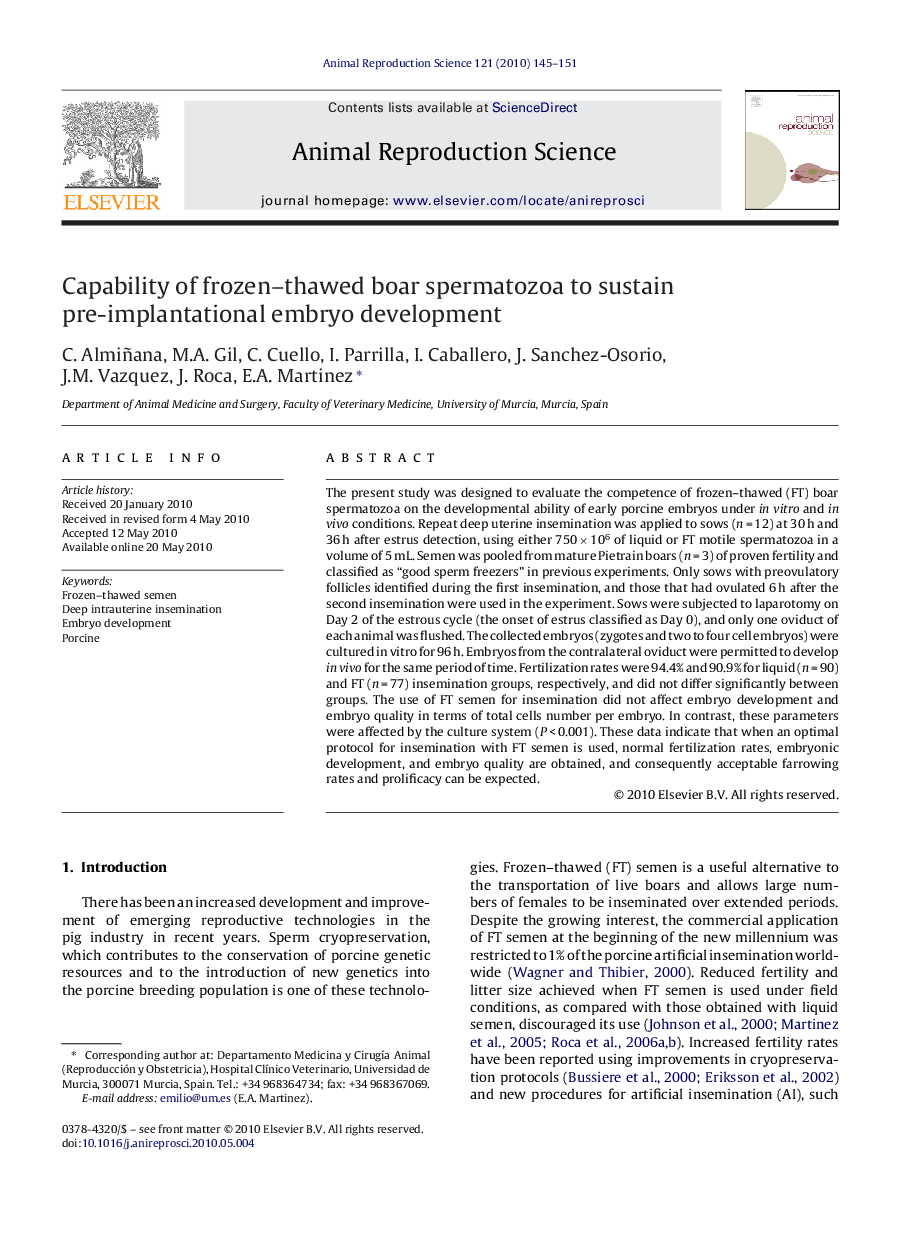| کد مقاله | کد نشریه | سال انتشار | مقاله انگلیسی | نسخه تمام متن |
|---|---|---|---|---|
| 2073686 | 1544781 | 2010 | 7 صفحه PDF | دانلود رایگان |

The present study was designed to evaluate the competence of frozen–thawed (FT) boar spermatozoa on the developmental ability of early porcine embryos under in vitro and in vivo conditions. Repeat deep uterine insemination was applied to sows (n = 12) at 30 h and 36 h after estrus detection, using either 750 × 106 of liquid or FT motile spermatozoa in a volume of 5 mL. Semen was pooled from mature Pietrain boars (n = 3) of proven fertility and classified as “good sperm freezers” in previous experiments. Only sows with preovulatory follicles identified during the first insemination, and those that had ovulated 6 h after the second insemination were used in the experiment. Sows were subjected to laparotomy on Day 2 of the estrous cycle (the onset of estrus classified as Day 0), and only one oviduct of each animal was flushed. The collected embryos (zygotes and two to four cell embryos) were cultured in vitro for 96 h. Embryos from the contralateral oviduct were permitted to develop in vivo for the same period of time. Fertilization rates were 94.4% and 90.9% for liquid (n = 90) and FT (n = 77) insemination groups, respectively, and did not differ significantly between groups. The use of FT semen for insemination did not affect embryo development and embryo quality in terms of total cells number per embryo. In contrast, these parameters were affected by the culture system (P < 0.001). These data indicate that when an optimal protocol for insemination with FT semen is used, normal fertilization rates, embryonic development, and embryo quality are obtained, and consequently acceptable farrowing rates and prolificacy can be expected.
Journal: Animal Reproduction Science - Volume 121, Issues 1–2, August 2010, Pages 145–151